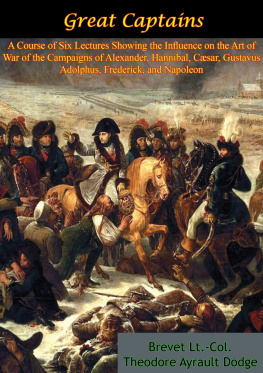SKETCH OF SWEDISH HISTORY TO THE TIME OF THE FIRST VASA
BEFORE ENTERING ON THE PRINCIPAL work which the author has undertaken in the writing of this volume, a historical account of Gustavus Adolphus, it is fitting to give a brief sketch of Sweden from the earliest times, presenting the more salient and important events and incidents of her history; and thus we shall be able to gain a better understanding of the national life and force which were behind the great leader who achieved so much for the renown of his people, and left so permanent an impression on the Europe of the seventeenth century. It may be said, in truth, that prior to nearly the close of the tenth century, Swedish annals, as known to us, are very confused and not much is entirely reliable. Scandinavia, of which Sweden forms so important a part, was known at all by them. The ancient Greeks and Romans had very erroneous ideas of the North of Europe, regarding it as made up of snow, ice, mists and darkness and believed that somewhere beyond those regions lived the Hyperboreans, mortals dwelling in perfect peace with their Gods, in a rich land, under sunny skies, where grains and fruits ripened without the toil of the husband man and plenty and comfort were the common lot of all. There none suffered by sickness and pain; neither the young nor the old died by disease, but those who became weary of life ended their days by casting themselves from some lofty cliff into the foaming and mysterious depths of the sea. Later it began to be doubted if mortals were really in possession of such charming abodes anywhere on the earth and the Hyperborean conception began to drop out of belief. The oldest account of the North which has been preserved to modern history is that given by Pytheas, who lived three hundred and fifty years prior to the Christian era. This man was a native of the Old Grecian city, now Marseilles in France, who was sent by his government to make inquiries into the situation and condition of those remote lands of the North from which Phoenicians brought valuable articles of commerce. Pytheas must have been a well instructed man for his time, and of a bold resolution; for he had to leave the bright skies of Southern Europe, take his perilous chances along the uncertain shores of the Atlantic to that distant region which the learned men of his time believed covered with snow and mist. The spirit of commerce is often bolder than science itself; and, as a citizen of an enterprising and commercial city, he felt the impulse of the atmosphere around him. The classic authors of Greece and Rome three centuries after him ridiculed his accounts; but the intrinsic evidence is now in favor of their authenticity in the opinion of modern historians. His voyages carried him to the shores of Britain and Scandinavia. Of his visit to the former country, which he called Albion, nothing is known, except that he traveled over a large part of what is now England and Scotland. He describes a place called Thule, which he regarded an island. From what he says of the great length of the days at midsummer, his description would apply to one of the numerous islands which are situated along the northern coasts of Sweden and Norway, though it might refer to the one of the Danish isles. Strabo represents Pytheas saying, that, in Thule, the nights at midsummer were only two or three hours in length. The weight of probability is, that it must have been somewhere in Scandinavia; and, for this reason, what is said of Thule and the lands in its vicinity has important value in its bearing on the early history of the Northmen. According to Pytheas, the inhabitants of the country at the south of Thule thrashed their grain in roofed buildings, where it was stowed away under cover, because the sun did not always shine there, and the rain and the snow often came and spoiled the crops in open air. They had a strong desire to trade with foreigners who came to their coasts, were keen to drive a bargain, and always ready to fight if they thought they had been insulted or ill-used. According to the view of the most careful of the Scandinavian historians, whose investigations as to all matters pertaining to their countries and people are elaborate and thorough, it is probable that Thule was a part of Scandinavia inhabitated and cultivated many centuries before the Christian era. It is certain that the picture which Tacitus traces of it, in the first Christian century, implies a culture more ancient. The states of Sueones, according to what Tacitus had learned, were important by their population, their fleets, and their arms. Their vessels were particularly fitted to the navigation of the coasts and rivers. They attached much value to fortune. The sea which surrounded them guaranteed them from the surprises of their enemies. It is thought that the Goths were the most ancient inhabitants of Scandinavia, occupying the south, and were earlier in Sweden than the Sueones. The Goths and the Sueones long fought each other, but finally fused, and formed the Swedish nation. The little that has come down to us, from the classic authors, of what Pytheas had written of his travels is all that we have of any voyagers report of the North of Europe until the time of Alfred of England. Twelve hundred years after Pytheas, two travelers from Scandinavia, whose names were Wulfstan and Othere, came to the court of the English king, who always gave a warm welcome to those who would bring him information from foreign lands. Alfred was pleased to listen to their story of what they had seen, and of the country from which they came. From their account of their travels, he wrote a brief history, and made a chart of modern Europe. The description of Scandinavia in these books is valuable. During the twelve centuries from the Marseilles traveler to Alfred to England, nothing was heard in Central and Southern Europe of the lives, customs, and doings of the Scandinavian people in their own homes; although within that period tribes of half savage, resolute, blue-eyed, tall, strong men from the North poured southward, and became known to the Romans as Cimbri, Teutons, Germans and Goths. At first the novel and fierce modes of attack used by these men, and their great strength and courage, carried terror and defeat among the trained soldiers of Rome, who knew not how to break through the long wall of shields chained together which those strange and audacious foes brought against them. But in time the superior discipline and arms of the Romans overcame the fierce Northern warriors. Notwithstanding their sanguinary experience and dread of these warlike strangers from the North, the Romans did not take pains to discover the precise part of Europe from which they came. It is said that finally, by chance, some strings of amber beads had been brought to Rome; and soon these ornaments were so much admired that the fashionable ladies of that city thought their dress incomplete unless they had an adequate number to ornament the neck and hair. Then, as in modern times, fashion was powerful to stimulate commerce. As soon as the amber beads were in demand by the Roman ladies, the agencies of Roman trade were put in motion, and found their way along the great rivers and through the half salvage and little known countries of Eastern and Northern Europe, till they reached the shores of those seas where it was believed the precious material so much coveted could be found in abundance. In this way, by degrees, the Romans became better acquainted with the location and nature of the lands from which the Goths and Germans had come. The Northmen themselves aided to dispel the prevailing ignorance in their own regard; for, in their roaming and voyages they took with them their bards, who sung of the deeds of their ancestors and the wonderful manner in which they feasted, fought, and conquered in their far off homes among the fjords, mountains, and snows of the North. It is probable, that, in the course of time, these tales of the Gothic bards became known to the people of Southern Europe, and thus the latter came to know more of Scandinavia and its people.










